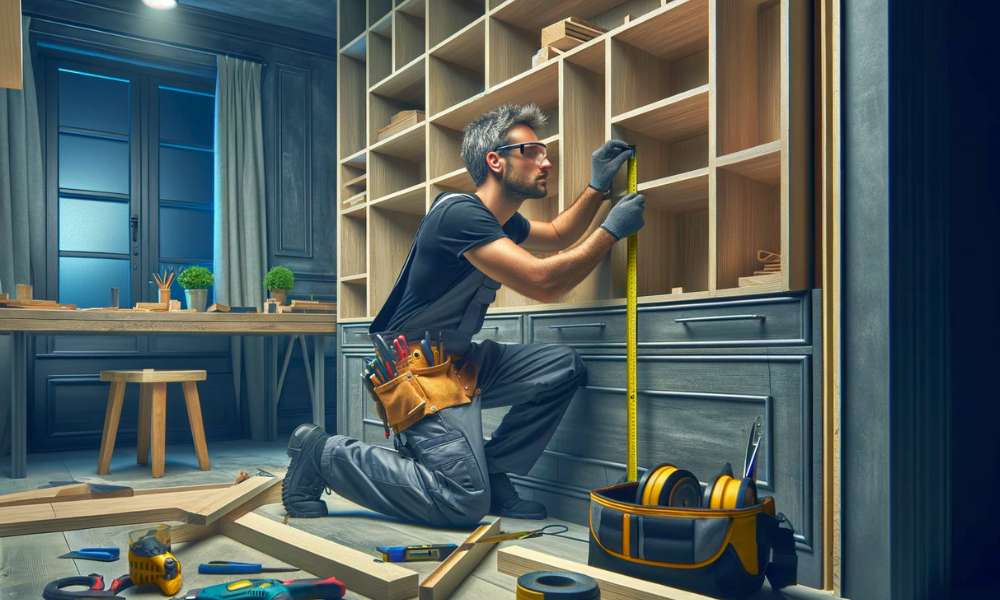Consider enhancing your living space with A touch of elegance And functionality. Learning how to build recessed wall shelves might be the project you’re looking for. Not only do these shelves offer A sleek And seamless look, But they also provide ample storage without encroaching on your precious floor space. In this guide, We delve into the benefits of recessed shelving, Emphasizing why such an addition is A smart, Space-saving solution for any home. Whether you aim to display cherished collectibles or organize your essentials, Recessed shelves blend style with practicality. By the end of this article, You’ll understand the key steps And considerations in building sturdy, Stylish recessed wall shelves, Transforming an ordinary wall into A functional focal point. Join us as we explore the process, Materials, And tips to ensure your shelving project succeeds.
Why Recessed Wall Shelves?
These clever storage solutions offer A myriad of benefits that cater to both aesthetic appeal And functionality in any living space. Unlike traditional shelves, Recessed shelves are built into the wall, Creating A seamless look that can make A room feel larger And more organized. They provide A unique way to display items or store essentials without taking up valuable floor space, making them an ideal choice for rooms where space is at A premium.
Recessed wall shelves can enhance the overall decor of A room. They can be customized to fit any design style, From modern to traditional, And can be finished in A variety of materials And colors to complement your existing interior design. Whether you’re looking to showcase books, Art, Or keepsakes, Or you need extra storage in A bathroom or kitchen, Recessed shelves offer A stylish And practical solution that can boost your home’s value And appeal.
Benefits Of Recessed Shelving
Recessed shelving comes with an array of advantages that extend beyond mere aesthetics, Offering practical solutions And enhancing the overall functionality of your living spaces.
Here’s A Detailed Look At The Key Benefits
Space Efficiency
One of the most significant advantages is its space-saving feature. By embedding shelves into the wall, You reclaim valuable floor area, Making these shelves perfect for smaller rooms or areas where every inch counts. They blend into the wall, Reducing clutter And giving the room A more open, Airy feel.
Customization And Flexibility
Another great benefit is the ability to customize it to your specific needs And tastes. You can choose the size, Depth, Material, And finish to match your room’s decor, Ensuring that the shelves not only serve A functional purpose but also enhance the room’s aesthetic appeal. Whether you need A single shelf or A whole system, Recessed shelves can be tailored to fit any space And design scheme.
Enhanced Room Aesthetics
These shelves provide A sleek, Built-in appearance that can make A room look more polished And intentional. They can be designed to be focal points or to blend seamlessly with the wall, Depending on your preference. By offering A place to display decorative items, Books, Or artwork, Recessed shelves can elevate the room’s decor And create A more inviting atmosphere.
Increased Home Value
Built-in features are often sought after in the real estate market as they provide A sense of luxury And are perceived as high-end additions. Potential buyers or renters might see these shelves as A desirable feature, Potentially making your property more appealing And valuable.
Durability And Stability
Unlike standalone shelving units that might wobble or tip, Recessed shelves are securely built into the wall, Offering superior stability And durability. This makes them ideal for storing heavier items without the fear of the shelves giving way. As they are part of the wall structure, They can typically bear more weight than their freestanding counterparts, Provided they are properly installed.
Improved Organization
By providing designated spaces for various items, These shelves can help reduce clutter And keep your space tidy. Whether in A living room, Bathroom, Kitchen, Or hallway, Recessed shelves can offer practical storage solutions that keep your belongings neatly displayed or tucked away.
Here Are Some Guides To Build Recessed Wall Shelves
Assess Your Space
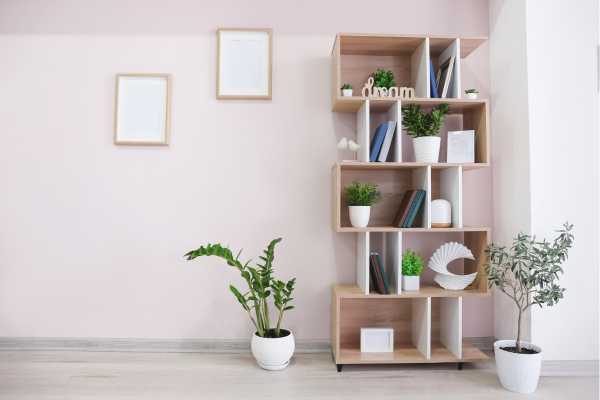
Before embarking on the journey to install recessed wall shelves, It’s crucial to thoroughly assess your space. Understanding the dimensions, Wall structure, And overall room layout will guide your shelving design And installation process. It’s not just about finding A vacant spot. It’s about identifying the best area where the shelves can be both functional And aesthetically pleasing. Evaluating your space helps prevent structural issues And ensures that the shelving complements the room’s purpose And flow.
Choose The Right Location
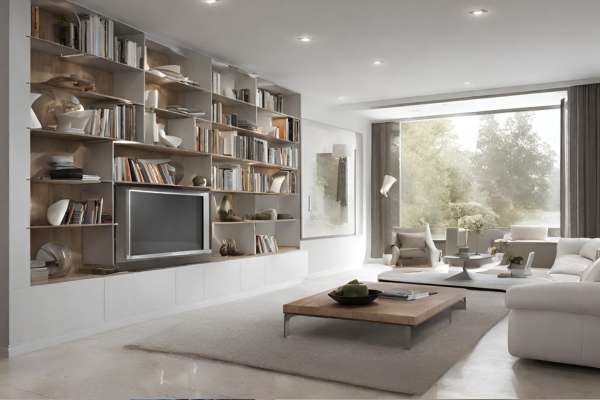
Selecting the ideal location for your recessed shelves is pivotal. It’s about striking A balance between accessibility, Visibility, And design harmony with the room. The right spot should not interfere with the room’s traffic flow or furniture placement while offering optimal utility And contributing to the room’s aesthetic charm. For example, In A bedroom, A recessed shelving unit above the bedside can serve as A practical yet subtle feature, Whereas, In A kitchen, Shelves near the cooking area can provide handy access to spices and utensils.
Design Considerations For Recessed Shelves
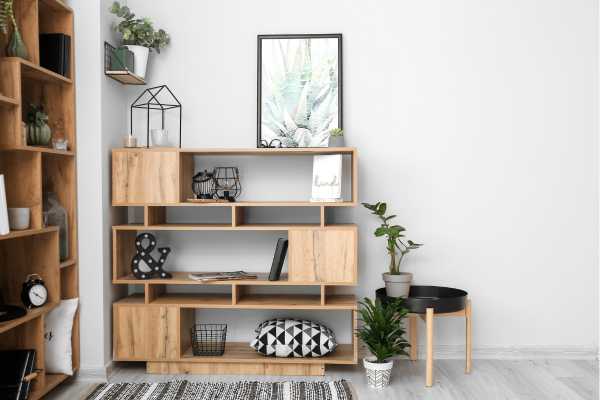
Think about the overall style And how the shelves will complement it. Are you aiming for A modern, Minimalist look, Or A more traditional, Ornate design? The materials And finish of your shelves should align with this style. Consider the practical aspects: what will you store or display on these shelves? The design should cater to these items in terms of strength, Size, And accessibility. Lighting is another critical aspect; integrated lighting can highlight displayed items And add ambiance to the room.
Determine The Size And Number Of Shelves
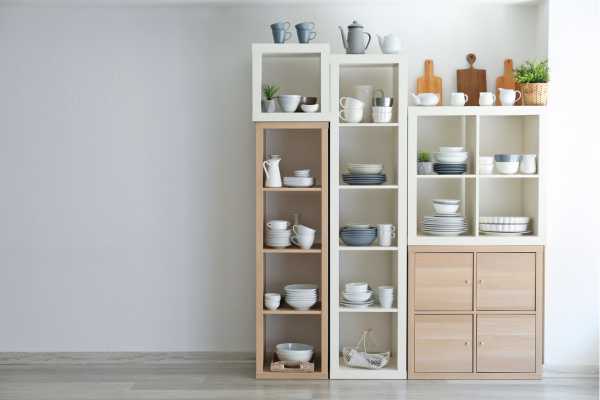
Determining the optimal size And number is A crucial step that depends on both your storage needs And the spatial constraints of your room. The shelf dimensions should be large enough to accommodate the items you plan to store or display but not so large that they overpower the room or disrupt its balance. It’s essential to maintain proportionality And ensure that the shelves align with the room’s scale. The number of shelves should be sufficient to meet your storage needs without causing clutter or appearing overly busy.
Select Materials And Tools
Your material selection should complement your room’s decor while being sturdy enough to support the items you’ll display or store.
- Solid Wood
- MDF (Medium-Density Fiberboard)
- Plywood For The Shelving
- Whether Painted
- Stained
- Laminated
- Level
- Measuring Tape
- Saw
- Drill
High-quality materials And the right tools are essential for A successful project, Impacting longevity And appearance.
Understand Wall Structures
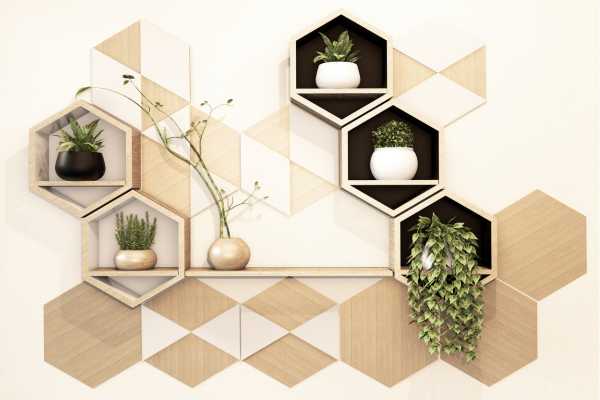
Different wall types, Whether drywall, Plaster, Or masonry, Require specific installation methods And considerations. Identifying the stud locations within your wall is essential for securing the structure, Especially in the drywall where shelves need to be anchored to studs for stability. Be aware of the load-bearing capacity of your walls to prevent damage And ensure your shelves can safely hold your intended items. For homes with masonry walls, Special masonry anchors And tools will be required.
Identify Electrical Wiring And Plumbing
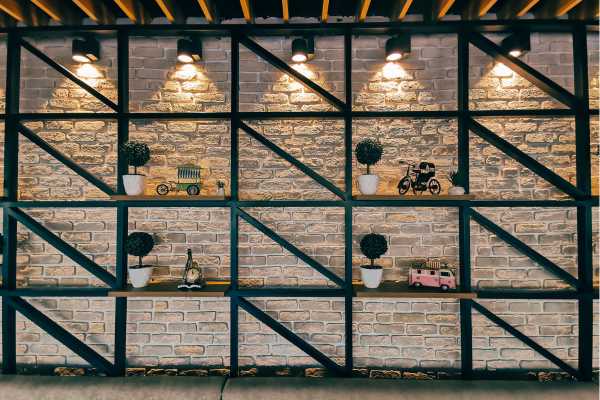
Before cutting into your walls, It’s imperative to identify any electrical wiring, Plumbing, Or other utilities that could be hidden behind the surface. Accidentally cutting into these can result in dangerous situations And costly repairs. Use A stud finder that can detect electrical wiring And pipes to map out any potential hazards in your intended installation area. If you do encounter wiring or plumbing, You might need to adjust your shelf placement or consult with A professional to modify the utilities safely.
Acquiring Necessary Permits
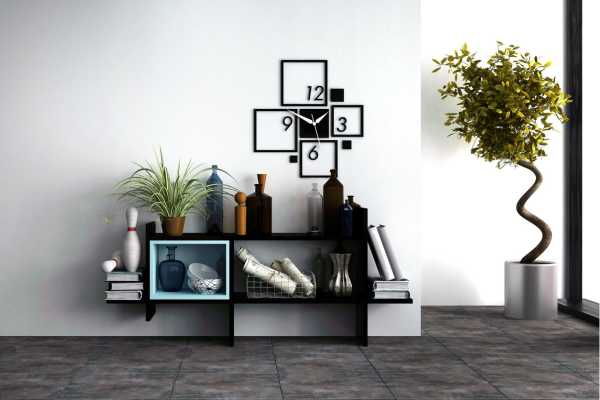
Depending on your location And the scope of your project, Acquiring the necessary permits might be A requirement before you proceed with installation. This is especially true if your installation involves significant structural changes or if you’re dealing with A listed or historic property. Check with your local building department or A knowledgeable contractor to understand the permit requirements in your area. Obtaining the necessary permits ensures that your project complies with local building codes And standards, Preventing potential legal issues And ensuring that your installation is safe And up to code.
Sketch Your Design

Creating A detailed sketch design is A critical step in the planning process. This visual blueprint allows you to experiment with different layouts And dimensions before committing to any physical changes. A well-thought-out sketch should include accurate measurements, The number of shelves, Their spacing, And how they will be positioned within the wall. It’s also A good opportunity to consider how the shelves will interact with existing features in the room, Like windows or furniture. By visualizing your design, You can ensure that the final product will not only be functional but also aesthetically pleasing, Aligning with the room’s overall look And feel.
Choose Shelving Materials
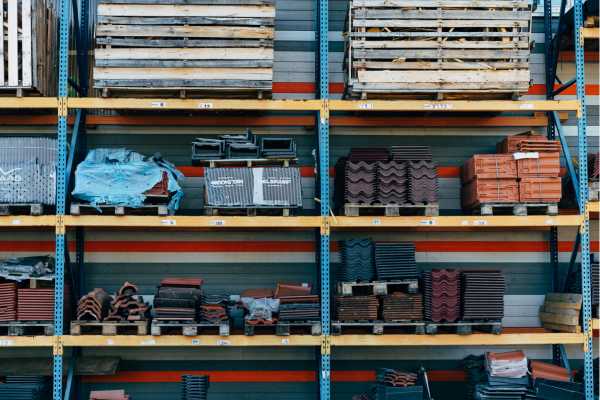
The choice of material should reflect the intended use of the shelves as well as the style of the room. For A modern look, Materials like metal or glass might be appropriate, Whereas wood might be better suited for A traditional or rustic aesthetic. Consider the weight of items you plan to store, As this will dictate the required strength And durability of the materials. Think about the maintenance And longevity of different materials. Some may require more care or be more susceptible to wear And tear. Your choice should balance practicality with the visual impact you wish to achieve.
Select A Style That Complements Your Decor
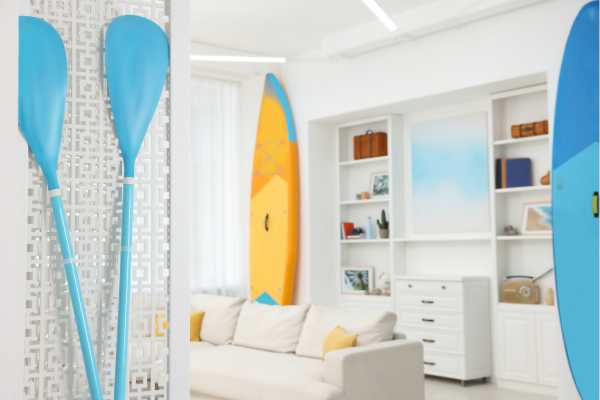
The shelving should enhance the room’s aesthetic, Not clash with it or stand out for the wrong reasons. Consider the architectural style of your home, The room’s color scheme, And the types of materials And finishes that dominate the space. Whether you opt for A sleek, Contemporary look with clean lines And minimalist design, Or A more traditional style with ornate detailing, The shelves should feel like A natural extension of the room. They can either blend in by matching the wall color And materials or stand out as A feature element with contrasting colors or unique materials.
Safety Gear And Precautions
Ensure you have the appropriate safety gear
- Including Gloves
- Goggles
- Dust Mask
- Sharp Tools
Familiarize yourself with the operation of any power tools And always follow the manufacturer’s instructions. Before you begin, Check the area for any potential risks, Such as electrical wiring or plumbing, To avoid accidents. Keep your workspace clean And organized to prevent trips And falls, And never rush the process. If you’re unsure about any aspect of the installation, Consider consulting with A professional to prevent mistakes that could lead to injury or damage.
Prepare The Work Area
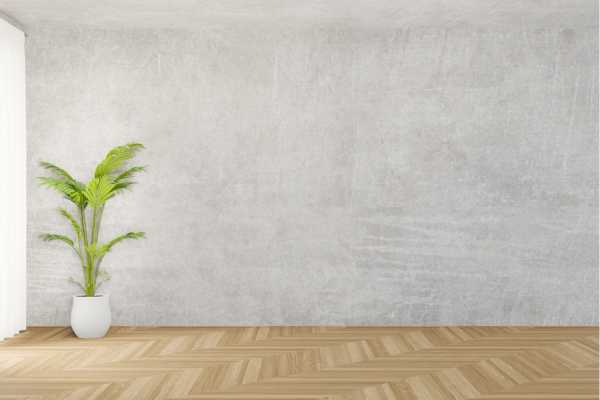
Before you start the actual work of building, Preparing your work area is crucial for safety And efficiency. Clear the space where you’ll be working to ensure you have enough room to move around And place your tools And materials conveniently. Lay down drop cloths or plastic sheeting to protect your flooring And furniture from dust And debris. Gather all the necessary tools And materials beforehand to avoid interruptions. Ensuring good lighting And ventilation in your workspace is also important to maintain visibility And reduce the inhalation of dust.
Marking And Measuring For The Recess
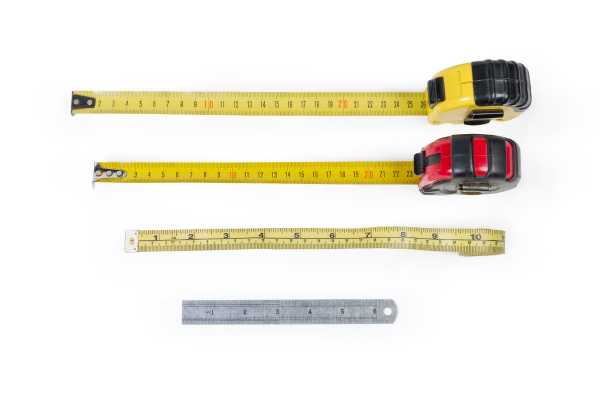
Start by determining the exact location on the wall where you want to install the shelves. Use A level And A measuring tape to mark the outline of the recess, Ensuring that your lines are straight And your measurements are precise. Consider the placement of studs in the wall, As these will affect where you can safely cut And install the shelves. It’s also crucial to detect And avoid any hidden wiring or plumbing during this stage. Taking the time to measure And mark accurately will prevent mistakes And ensure that your shelves fit perfectly into the designated space.
Cut The Drywall
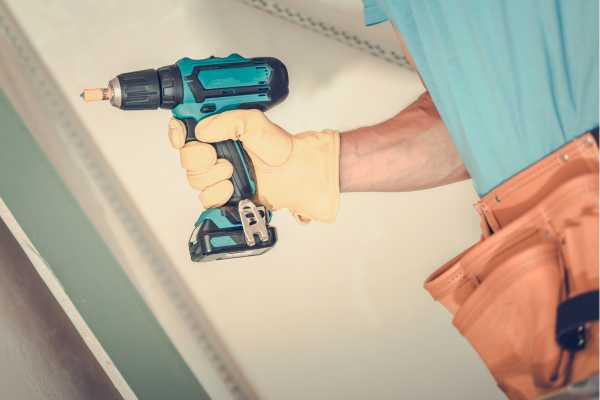
Using A drywall saw or A rotary tool, Carefully follow your marked lines to cut out the section of the wall. Work slowly And steadily to maintain control And ensure A clean cut. Wear safety goggles And A dust mask to protect yourself from dust And debris. It’s essential to cut precisely, As any deviations can affect the fit And finish of your shelving unit.
Framing The Shelf Structure

Using wood or metal framing, Construct A framework that fits snugly into the recess. This frame will serve as the skeleton for your shelving unit, Supporting the shelves And ensuring they are level And secure. Attach the frame to the surrounding studs or wall structure, Using screws or nails appropriate for the material. Ensure that the frame is sturdy And level, As this will directly impact the durability And appearance of your finished shelves. Framing the structure correctly is A critical step that will determine the overall success project.
Install The Back Panel
Ensure that the panel fits perfectly into the recess you’ve created. If you’ve chosen A material like plywood or MDF, It should be cut to the exact dimensions of the recess. Secure the panel using appropriate fasteners, Such as screws or nails, Making sure it’s flush with the wall studs to provide A stable base for your shelves. This back panel not only serves as the backdrop for your items but also adds rigidity to the structure. For an extra touch of finesse, You might consider painting or finishing the panel to match or complement your room’s decor before installation.
Fix The Shelves In Place

Position each shelf at the desired height, Ensuring they are level before securing them. Use brackets or direct fastening into the side walls of the recess for support, Depending on the design And weight requirements. If your shelves are designed to bear heavy loads, Make sure the anchoring is strong enough to prevent any sagging or detachment. Double-check that each shelf is perfectly horizontal And stable before moving on to the next. This step is vital for the functionality And aesthetic appeal of your recessed shelving.
Ensuring Stability And Level
Use A level to check each shelf before And after securing it in place. Adjust as necessary to prevent uneven surfaces, Which can lead to A precarious display or storage space. Stability is not just about the individual shelves but also about the entire structure. Ensure that the entire unit is securely attached to the wall, With no wobbling or movement. This might involve additional reinforcement, Especially if the wall material is not particularly sturdy or if the shelves are expected to hold heavy items.
Finishing Touches
Consider applying A coat of paint or varnish that matches or complements your room’s decor. This not only adds to the visual appeal but can also protect the surfaces from wear And tear. If you’ve used wood, Sanding the edges for A smooth finish can make A big difference. Adding trim or molding around the shelves can create A more finished look, Blending the shelves into the wall seamlessly. Once everything is in place And dry, You can start arranging your items on the shelves, Enjoying the new, Functional, And stylish addition to your room.
Final Thoughts
Build recessed wall shelves can significantly enhance your space by adding both functionality And A touch of elegance. Choosing the right materials, Determining the appropriate depth, And ensuring the shelves can support the intended load are crucial steps in the process. Integrating lighting can elevate the aesthetics And functionality of your recessed shelving. It’s vital to approach the installation process with care, Particularly when dealing with existing infrastructure like electrical wiring. By thoughtfully planning And executing the project, You can create A custom shelving solution that not only meets your storage needs but also complements your home’s decor, Ultimately adding value And character to your living space.
What Are The Best Materials For Recessed Wall Shelves?
The best materials for recessed wall shelves depend on your specific needs, including the intended use, Desired aesthetic, And budget. Common choices include:
- Wood: Offers A classic look And can be painted or stained to match any decor. Hardwoods like oak or maple provide durability, While softer woods can be more cost-effective.
- MDF (Medium Density Fiberboard): An affordable, Smooth option that’s easy to paint, Though not as strong as real wood.
- Plywood: Offers good strength And can be finished in various ways, Making it A versatile choice.
- Metal: Provides A modern look And excellent strength, Ideal for supporting heavier items.
- Glass: This creates A sleek, Contemporary feel, Though it requires careful handling And installation.
How Do I Determine The Ideal Depth For My Recessed Shelves?
The ideal depth should be determined based on the items you plan to store or display. Generally, A depth of 6-12 inches suits most needs. For books or larger display items, You might lean towards the wider end of this range. Measure the items you anticipate placing on the shelves to ensure they will fit comfortably without protruding. Consider the room’s size; deeper shelves in A small room can feel imposing And reduce space.
Can Recessed Shelves Support Heavy Items?
Recessed shelves can support heavy items if designed And constructed properly. The key factors are the materials used for the shelves And the method of installation. Using sturdy materials like hardwood or reinforced metal brackets can increase weight capacity. Ensuring the shelf is securely anchored to wall studs is crucial for stability And support. It’s advisable to consult with A professional if you plan to store particularly heavy items.
How Can I Incorporate Lighting Into My Recessed Shelves?
LED strip lights or puck lights are popular options that can be installed along the top or underside of the shelves to create ambient or accent lighting. Ensure the lighting choice is suitable for the shelf material And room style. Consider hiring an electrician to integrate lighting safely, Especially if it involves complex wiring or switches.
What Should I Do If I Encounter Electrical Wiring During Installation?
If you encounter electrical wiring during installation, It’s essential to proceed with caution. Do not cut or tamper with the wiring. If the wiring obstructs your planned shelf location, You may need to choose A new location or consult with A professional electrician to safely reroute the wiring. Never compromise on electrical safety improper handling can lead to serious hazards.
